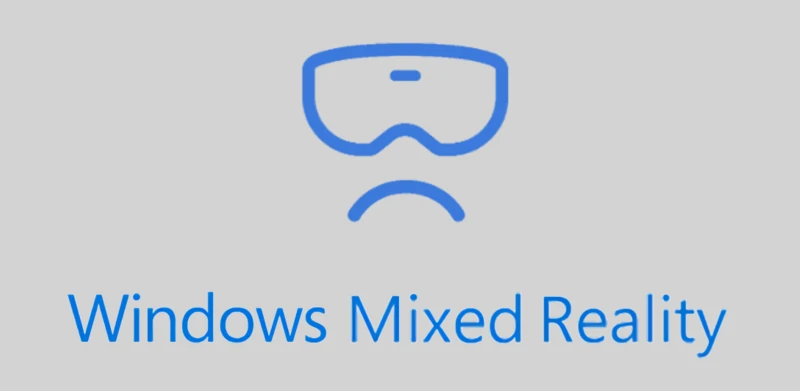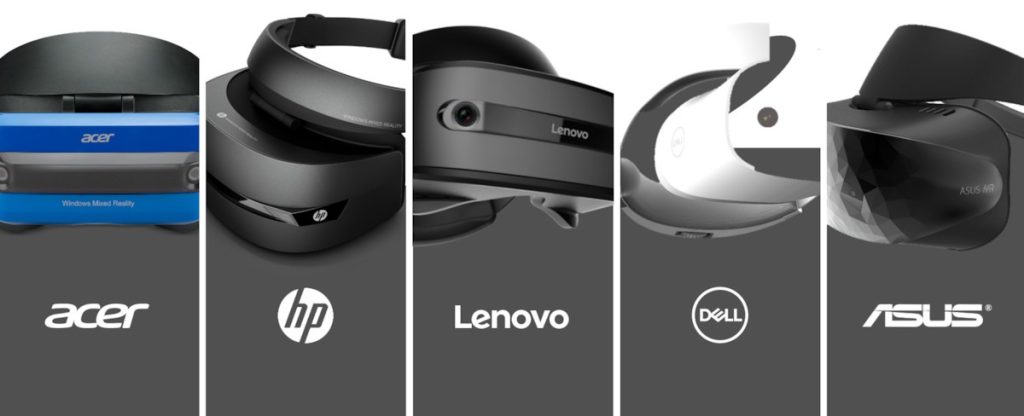
Well, I wondered when this would happen. Microsoft let things go for longer than I expected given their track record of messing up good things. They’ve finally made it official that they are discontinuing support for their VR system – it’s the end of Windows Mixed Reality (WMR).
UPDATE (12/24/2023): This does not mean that WMR headsets will stop working immediately. Microsoft has clarified their actual plan to UploadVR.1
How it all began
Announced in 2017, WMR was truly exciting stuff. Competing against HTC Vive and the Oculus Rift, it was an affordable entry point for this amazing new tech that was otherwise only available at the ~$1000 price point. Suddenly, you could get a headset and two controllers for around $400. Microsoft never made any of these headsets. Instead, their contribution was to create a reference design that other manufacturers could use, along with the system software required to make use of it. Without that, everyone needed to design the hardware, and create their own app stores, tracking algorithms, and interaction logic. Using a reference design meant that most of the work was designing the exterior look, making ergonomic tweaks, and choosing the combination and quality of sensors and electronics. Reduced R&D made for a cheaper product.

At its peak, there were headsets using the WMR platform from Acer, HP, Lenovo, Dell, Asus, Samsung, and Medion. All were roughly the same price and had roughly the same specs. Samsung and HP introduced second-gen models with higher-end displays and better tracking, but they just couldn’t compete with the other options out there, especially as the Quest standalone headsets started being released.
Making VR a reality
It’s likely that their big push, even if it didn’t sell enough units, ended up making VR feel more mainstream. Suddenly there were all these models on the market, and many were tempted to take the plunge given the relatively low price. Even without making a purchase, it probably got people starting to think of VR as something worth looking into more. That’s definitely a great side effect, but it’s so typically Microsoft to introduce a great new product, innovate a little, then just throw in the towel (see Windows Phone, Microsoft Band, Zune, Xbox Kinect, and so on…). It’s a bit depressing and certainly makes you cautious when they make new announcements.
What now?
If you have a WMR headset sitting around, I expect it’s possibly just gathering dust. Even though Microsoft and Steam teamed up so SteamVR titles would work on the headsets, it still requires the underlying Microsoft support, which is what’s going away. With this latest announcement, they really will be deadweights. If you don’t know what else to do with them and enjoy some tinkering, there are two open-source projects that could be of interest.
OpenHMD provides drivers for most common headsets including WMR devices. These are a complete rewrite so wouldn’t be affected by manufacturers dropping support. By itself, this wouldn’t run any apps though (they’re just device libraries you can use). For that, you’d need integration with WebXR, SteamVR, or another VR app library. For that, you can use Monado. Neither library is 100% feature complete, but it’s better than being completely abandoned.
Closing
It was a fun ride. I was so excited when I saw the initial WMR devices and got a headset for each of my sons for Christmas. Unfortunately, our desktops at the time weren’t powerhouses so they didn’t achieve their potential, but I could see the game changer they were. It was on one of those headsets that I first played Holotour which showed me how VR could take us places to visit and learn in entirely new ways. Even though the end of Windows Mixed Reality is disappointing, the Meta Quest 2 and Quest 3 are great values and new headsets keep pushing the boundaries. As one of my favorite YouTubers says, “what a time to be alive!”
Footnotes
- According to UploadVR, the following statement was released by Microsoft:
“As of Nov. 1, 2026 for consumers and Nov. 1, 2027 for commercial customers, Windows Mixed Reality will no longer be available for download via the Mixed Reality Portal app, Windows Mixed Reality for SteamVR, and Steam VR beta, and we will discontinue support.
[…]
Existing Windows Mixed Reality devices will continue to work with Steam until users upgrade to a version of Windows that does not include Windows Mixed Reality.” ↩︎

